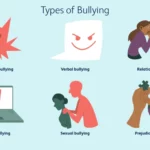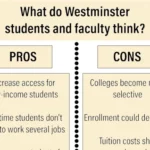With the rise of online education due to the COVID-19 pandemic, Zoom has become an essential tool for teachers and students alike. Zoom Education offers a wide range of features that allow for interactive and engaging virtual classrooms, making it easier for teachers to manage their classes and for students to learn from anywhere. In this article, we will explore the benefits of Zoom Education and how it can be used for various subjects, including language learning, social studies, science, math, music, and physical education. We will also discuss best practices for teaching with Zoom and the future of online education. So, let’s zoom into the world of virtual education and discover the endless possibilities!
Contents
- What is Zoom Education?
- Getting Started with Zoom Education
- Teaching with Zoom
- Zooming into the Future of Education
- Conclusion
-
Frequently Asked Questions
- How can Zoom Education benefit my classroom?
- Can Zoom Education be used for language learning?
- Is it possible to use Zoom Education for physical education classes?
- Can I get discounts on Zoom Education as a teacher?
- What types of classes can be taught using Zoom Education?
- How can I create a virtual classroom using Zoom Education?
- What are some best practices for teaching with Zoom Education?
- What is the future of online education with Zoom?
- Can Zoom Education be used for group projects and collaboration?
- How can Zoom Education address accessibility needs for students?
- References
What is Zoom Education?

Zoom Education is a platform designed specifically for educators and students to connect and learn in a virtual environment. With its easy-to-use interface and powerful features, Zoom Education has become a popular choice for remote learning. Teachers can create virtual classrooms, manage their students, and utilize the Zoom Toolkit to enhance their lessons. Zoom Education also offers discounts for teachers and a variety of resources for teaching different subjects, such as Zoom for Language Learning, Zoom for Social Studies, and Zoom for Science. The benefits of Zoom Education are numerous, from increased accessibility to flexible scheduling. As online education continues to grow, Zoom Education is poised to be a valuable tool for teachers and students alike.
Zoom in the Classroom
Zoom Education has become an essential tool for remote teaching and learning. With , teachers can create a virtual classroom where students can interact with each other and the teacher through video and audio calls. The platform allows teachers to share their screen, present their lesson plans, and use interactive tools such as whiteboards and polls to engage students. Teachers can also record their sessions for future reference or for students who could not attend the live class session.
Using Zoom in the Classroom also provides teachers with a variety of benefits. Firstly, it enables teachers to reach students who may not be able to attend class in person due to various reasons such as illness, distance, or other circumstances. Secondly, it allows teachers to collaborate with other educators from different locations to plan and deliver lessons. Lastly, it provides students with new opportunities to learn from experts and interact with students from different parts of the world through virtual field trips and guest speakers.
To make the most out of Zoom in the Classroom, teachers can use various educational resources such as ABC Mouse for Teachers, Teaching with Movies, Fluorescent Light Filters, and Teacher Freebies. These resources can help teachers create engaging and interactive lessons that cater to different learning styles and abilities.
Overall, Zoom in the Classroom has transformed the way teachers teach and students learn in the digital age. By leveraging the platform’s features and educational resources, teachers can create dynamic and effective virtual classrooms that inspire and empower students to succeed.
Discounts for Teachers
Zoom Education offers discounts for teachers who want to use the platform to facilitate remote learning. These discounts are available to K-12 schools, colleges, and universities. Teachers can save up to 50% on Zoom plans for their classrooms. Additionally, Zoom provides free resources for educators to help them make the most of online learning. For example, teachers can access resources for online lesson planning, virtual field trips, and interactive activities. Zoom also partners with other educational companies to bring exclusive discounts to teachers. Teachers can access discounts for language learning software such as Rosetta Stone, grammar tools such as Grammarly, and fun classroom activities such as wooden 3D puzzles and ant farms for kids. By providing discounts and resources for teachers, Zoom is committed to helping educators provide high-quality online education to their students. Another great resource for educators is Adventure Academy, an online learning platform for kids ages 8-13 that offers a wide range of lessons in math, science, social studies, and language arts.
Getting Started with Zoom Education

Getting started with Zoom Education is easy and straightforward. Creating a Virtual Classroom is the first step, which involves setting up a Zoom account, creating a meeting, and inviting students to join. Once the virtual classroom is set up, Managing Your Classroom is the next step, which involves familiarizing oneself with Zoom’s features and tools, such as the chat function, screen sharing, and breakout rooms. Lastly, Zoom offers a Zoom Toolkit that includes resources and tips for educators to make the most of their virtual classroom. For educators looking to take the first step in utilizing technology for their classroom, Zoom Education is a great stepping stone.
Creating a Virtual Classroom
Creating a virtual classroom with Zoom Education is an easy process that can be done in a few simple steps. First, you need to sign up for a Zoom account. Once you have signed up, you can create a virtual classroom by clicking on the “New Meeting” button on the homepage and selecting “Start with Video.” You can then customize your virtual classroom by adding a virtual background, sharing your screen, and using the chat feature to communicate with your students.
To ensure that your virtual classroom runs smoothly, you should make sure that you have a stable internet connection and that your device meets the minimum system requirements for Zoom. You should also test your audio and video settings before your first virtual class to avoid any technical issues.
To create a more engaging virtual classroom experience for your students, you can use a variety of Zoom Education features such as breakout rooms, polls, and whiteboards. Breakout rooms allow you to divide your class into smaller groups for more focused discussion, while polls can be used to gather feedback and assess student understanding. Whiteboards can be used for collaborative brainstorming and note-taking.
Creating a virtual classroom with Zoom Education is a simple and effective way to deliver high-quality education to your students. With its user-friendly interface and powerful features, you can easily create an engaging and interactive learning environment that meets the needs of your students. Click here to learn more about how you can use Zoom Education to enhance your online teaching.
Managing Your Classroom
Managing your classroom in Zoom Education is easy and efficient. You have complete control over your virtual classroom, from muting and unmuting students to sharing your screen and managing breakout rooms. Here are some tips for managing your classroom effectively:
- Mute and Unmute: Use the mute function to control the classroom noise when a student is speaking or when you are lecturing. Encourage your students to use the virtual hand-raising feature to indicate they have a question or comment.
- Share your screen: Share your screen to display class materials, presentations, or videos. You can also annotate on your screen to keep your students engaged and focused.
- Breakout rooms: Use breakout rooms to divide students into smaller groups for discussion, activities, or projects. Assign each group to a breakout room and join each one to monitor their progress and answer questions.
- Attendance: Take attendance with the Zoom attendance report feature. You can generate a report after the class to see who attended and for how long.
- Recording: Record your class sessions for students who missed a class or for future reference. You can also share the recording with your students so they can review the material at their convenience.
- Interaction: Encourage interaction by using the chat feature, virtual hand-raising, or polls. This will keep your students engaged and help you assess their understanding of the material.
By utilizing these Zoom Education features, you can effectively manage your virtual classroom and create an engaging and interactive learning experience for your students.
Zoom Toolkit
Zoom Education offers a variety of tools to enhance the virtual classroom experience for both teachers and students alike. Here are some of the key features of the Zoom toolkit:
- Screen Sharing: Teachers can share their screen with students, allowing them to display presentations, videos, and other materials in real-time. This feature also allows students to share their screens, promoting collaboration and engagement.
- Whiteboard: The whiteboard feature allows teachers to write, draw, and annotate in real-time, making it easier to explain complex concepts and engage students in interactive activities.
- Breakout Rooms: This feature enables teachers to divide students into smaller groups for focused discussions or collaborative work.
- Recording: All Zoom sessions can be recorded and saved for future reference. This allows teachers to review past lessons and share them with absent students or those who need extra help.
- Virtual Backgrounds: Teachers can use virtual backgrounds to create a more engaging and visually appealing classroom environment.
- Chat: The chat feature allows students to ask questions, share ideas, and communicate with the teacher and their peers during class.
- Polls: Polls can be used to gather instant feedback from students during class, making it easier to assess understanding and adjust instruction accordingly.
By utilizing the Zoom toolkit, teachers can create dynamic and engaging virtual classrooms that promote active learning and student success.
Teaching with Zoom

Teaching with Zoom has become the new normal for educators all over the world. As the pandemic forced schools to shut down and move to remote learning, teachers had to quickly adapt their lesson plans to fit the online format. Zoom has proven to be a valuable tool for teachers, allowing them to continue educating their students from afar. This section covers best practices for Zoom Education, including tips for teaching various subjects and how to make the most of the platform’s features. Whether you’re teaching language, social studies, science, math, music, or physical education, there are many ways to use Zoom to engage your students and create a dynamic learning experience. As the future of education continues to evolve, there’s no doubt that Zoom Education will play an important role in shaping the way we teach and learn.
Best Practices for Zoom Education
Zoom has become an essential tool for educators around the world, enabling them to connect with their students and continue teaching despite the challenges posed by the pandemic. To make the most of Zoom for education, it’s important to follow some best practices that will help ensure a successful and engaging learning experience for your students.
1. Prepare and plan ahead: Before each session, make sure you’re familiar with the material you’ll be covering and have a clear plan for how you’ll present it. Send students any necessary materials in advance, and make sure they know what’s expected of them during the session.
2. Maximize engagement: Keep students engaged and involved by using interactive tools like polls, breakout rooms, and chat features. Encourage participation and collaboration by asking questions, soliciting feedback, and providing opportunities for peer-to-peer discussion.
3. Set clear guidelines: Establish clear guidelines for behavior and participation, and communicate them clearly to your students. This includes expectations for things like attendance, participation, and online etiquette.
4. Use multimedia: Make use of multimedia tools like videos, images, and audio recordings to help illustrate your points and keep students engaged. Be mindful of accessibility concerns and ensure that all students can access and engage with the content.
5. Provide feedback: Provide regular feedback to students on their progress and participation, and be available to answer questions and provide guidance outside of class time. Make use of interactive rubrics and other assessment tools to help track student progress and provide targeted feedback.
By following these best practices, you can help ensure a successful and engaging online learning experience for your students, and make the most of Zoom for education.
Zoom for Language Learning
Zoom Education is an excellent tool for language learning. With its interactive features and ability to connect people from all over the world, Zoom Education makes it easy to learn a new language from the comfort of your own home. Here are some ways you can use Zoom Education to improve your language skills:
1. Language Exchange
Zoom Education is a great platform for finding language exchange partners. You can connect with native speakers of the language you are learning and practice speaking with them. Zoom Education’s video and audio features make it easy to have a conversation and practice your pronunciation.
2. Online Language Classes
Many language schools and teachers are now offering online classes through Zoom Education. You can find classes for all levels and languages, and the classes are often more affordable than in-person classes. Online classes also offer more flexibility, as you can attend from anywhere in the world and at any time that suits you.
3. Language Workshops and Events
Zoom Education is a great platform for attending language workshops and events. You can find workshops on specific topics, such as grammar or pronunciation, or attend language events where you can meet other language learners and practice your speaking skills.
4. Language Tutoring
If you prefer one-on-one instruction, you can find language tutors who offer online tutoring through Zoom Education. With Zoom Education’s screen sharing feature, your tutor can share materials with you and give you real-time feedback on your writing and speaking.
5. Language Study Groups
You can also use Zoom Education to start or join a language study group. You can connect with other language learners and practice speaking and writing together. Zoom Education’s breakout room feature allows you to divide into smaller groups for more focused practice.
Zoom Education is a great tool for language learning. Whether you prefer one-on-one tutoring or group practice, there are many ways to use Zoom Education to improve your language skills. With its interactive features and ability to connect you with people from all over the world, Zoom Education is a great way to learn a new language from the comfort of your own home.
Zoom is an excellent platform for teaching social studies, as it provides a range of tools to help engage students with the subject matter. One of the key benefits of using Zoom for social studies is the ability to bring in guest speakers from around the world. With Zoom’s virtual background feature, students can take a virtual trip to historical sites, museums, and cultural landmarks. Students can also work collaboratively on projects, using Zoom’s breakout room feature to divide into groups and discuss topics in greater depth. Zoom can also be used to host debates and discussions, allowing students to develop their critical thinking skills. Teachers can create interactive polls and quizzes, using Zoom’s polling feature to engage students and assess their understanding of the material. Additionally, Zoom’s screen sharing feature can be used to display presentations, videos, and other multimedia content that can help bring social studies to life. With Zoom, teachers can create an immersive and engaging learning experience that helps students develop a deeper understanding of the world around them.
Zoom for Science
is an excellent tool for conducting science classes online. With its interactive features, students can easily participate in experiments and demonstrations from the comfort of their own homes. Teachers can conduct virtual labs and demonstrations using Zoom’s screen sharing feature to display videos, images, and simulations. Additionally, teachers can use the breakout rooms feature to assign group work, where students can collaborate on experiments and discuss their findings.
Here are some examples of how Zoom for Science can be utilized in different science subjects:
- Biology: Teachers can conduct virtual dissections to explore the anatomy of different organisms. They can also use Zoom’s screen sharing feature to display videos and simulations of different biological processes.
- Chemistry: Teachers can conduct virtual experiments, like titrations and acid-base reactions, using Zoom’s screen sharing feature. They can also use breakout rooms to assign group work, where students can collaborate on experiments and discuss their observations.
- Physics: Teachers can conduct virtual demonstrations, like pendulum experiments and simulations of projectile motion, using Zoom’s screen sharing feature. They can also use breakout rooms to assign group work, where students can collaborate on experiments and discuss their findings.
Overall, Zoom for Science is an effective tool for conducting science classes online. It enables teachers to engage students in interactive virtual labs and demonstrations and facilitates collaborative learning through the use of breakout rooms.
Zoom for Math
Zoom is a versatile platform that can be used to teach various subjects, including Math. With Zoom, teachers can create an interactive virtual classroom that allows students to engage with Math concepts in real-time. Some of the features that make Zoom ideal for teaching Math include the screen sharing option, which allows teachers to show diagrams, graphs, and other visual aids that help to explain Math concepts. Also, the virtual whiteboard feature in Zoom allows teachers to write Math equations and formulas, which students can see in real-time.
Using Zoom for Math also allows teachers to use breakout rooms to group students for discussions, problem-solving, and collaborative work. Teachers can also use Zoom to record Math lessons, which students can access later to review the material covered in class. Additionally, Zoom provides teachers with assessment tools such as interactive rubrics that enable them to assess students’ Math skills and give personalized feedback that will strengthen their Math skills.
Zoom provides a flexible, engaging, and interactive platform for teaching Math. It allows teachers to create a virtual classroom that replicates the traditional classroom environment, making it easier for students to learn Math concepts. Zoom’s features such as screen sharing, virtual whiteboard, breakout rooms, and assessment tools provide teachers with the necessary tools to teach Math effectively.
Zoom for Music and Art
Zoom Education is not only a great tool for teaching traditional subjects, but it also offers many opportunities for teachers to engage students in music and art education. With its interactive features, teachers can create a virtual classroom where students can participate in music and art activities in real-time.
One of the most significant benefits of using Zoom for music and art education is that it allows teachers to share their screens and engage students in multimedia content. Teachers can share videos, images, and audio recordings to enhance their lessons and make them more interactive. They can also use Zoom’s whiteboard feature to illustrate concepts and ideas and encourage students to participate in drawing and sketching activities.
In addition, Zoom’s breakout rooms feature is an excellent way to create small groups for music and art activities. Teachers can assign students to different groups and provide them with specific instructions for their activities. This allows students to collaborate and share their work with one another, even when they are not in the same physical location.
Another significant benefit of using Zoom for music and art education is that it allows teachers to bring in guest speakers and performers from around the world. Teachers can invite artists and musicians to speak to their students and share their experiences and expertise. This can be a great way to expose students to different styles and genres of music and art.
Overall, Zoom Education is an excellent tool for music and art teachers who want to engage their students in meaningful and interactive activities. With its many features and capabilities, teachers can create an engaging and immersive learning experience that will inspire students to explore their creative side.
Zoom for Physical Education
Physical education is an important part of a student’s education, and Zoom has made it possible to continue providing fitness and wellness classes even when students are learning from home. Zoom seamlessly integrates with fitness apps and wearables, making it easy for teachers to monitor student progress and provide feedback. The platform also allows for live fitness classes, where students can follow along with their teacher in real-time, and ask questions or get feedback on their form. Plus, Zoom offers breakout rooms, which can be used for small group activities or team-building exercises. Here are some examples of how Zoom can be used in physical education classes:
| Activity | Description |
|---|---|
| Yoga | Teachers can lead students through a yoga practice, with demonstrations and verbal cues for each pose. Students can follow along and ask questions or get feedback on their form. |
| Dance | Teachers can choreograph a dance routine and teach it to students over Zoom. Students can practice the routine and perform it for their classmates in breakout rooms. |
| Strength Training | Teachers can lead students through a strength training workout, using bodyweight exercises or equipment that students have at home. Teachers can monitor student form and progress using Zoom’s video capabilities. |
| Team Sports | Teachers can use breakout rooms to divide students into teams and run virtual games or drills. Students can communicate with their teammates using Zoom’s chat function, and teachers can monitor progress and offer feedback. |
Zoom is a great tool for physical education teachers to continue providing quality fitness and wellness classes, even in remote learning environments. By leveraging Zoom’s features and capabilities, teachers can create engaging and effective lessons that keep students healthy and active.
Zooming into the Future of Education
As we zoom into the future of education, it’s clear that online learning is here to stay. With Zoom Education, teachers and students alike have access to powerful tools that enable interactive, engaging, and effective learning experiences. The benefits of Zoom Education are numerous, from the ability to connect with students anywhere in the world to the flexibility and convenience of virtual classrooms. As technology continues to evolve, we can expect online education to become even more immersive and personalized. The future of education is bright, and Zoom Education is leading the way.
The Benefits of Zoom Education
Zoom Education has numerous benefits that make it an attractive option for both teachers and students. Here are some of the most significant benefits of using Zoom for online education:
- Flexibility: Zoom Education provides flexibility for both students and teachers. Students can attend classes from anywhere in the world, and teachers can teach from anywhere with an internet connection.
- Increased Access: Zoom Education has made education more accessible for students who might not have been able to attend classes in person, whether due to distance or other reasons.
- Cost-Effective: Zoom Education eliminates the need for students to pay for transportation, accommodation, and other expenses associated with attending classes on campus.
- Interactive Learning: Zoom Education provides an interactive learning experience for students, allowing them to ask questions, participate in discussions, and collaborate on projects with their peers.
- Customizable Learning: Zoom Education allows teachers to customize their lessons and teaching materials to suit the needs of their students, making learning more effective and engaging.
- Improved Communication: Zoom Education provides a platform for teachers and students to communicate effectively, whether through text, audio, or video, helping to establish stronger relationships and improve learning outcomes.
- Recorded Lessons: Zoom Education allows teachers to record their lessons, making them available for students to review and study at their own pace.
Zoom Education has revolutionized the way that online education is delivered, providing a more flexible, interactive, and engaging learning experience for students around the world.
The Future of Online Education
As technology continues to evolve, the future of online education is exciting and full of possibilities. Online education has already proven to be a flexible and accessible option for many students, and it is likely that it will continue to grow and improve. With the help of platforms like Zoom, students from all over the world can connect with each other and with teachers in real-time, making education more accessible than ever before.
In the future, we can expect to see even more innovations in online education. Virtual and augmented reality technology will likely become more integrated into online learning, allowing students to experience a more immersive and interactive educational experience. Additionally, AI and machine learning will likely play a bigger role in online education, providing personalized learning experiences for each student.
As more and more students turn to online education, it is important to ensure that the quality of education remains high. Teachers and institutions will need to continue to adapt and improve their teaching methods to provide the best possible learning experience for students. With the help of platforms like Zoom and other online learning tools, we can work towards a future where education is accessible to all, regardless of location or circumstance.
Conclusion
In conclusion, Zoom Education is a powerful tool that has revolutionized the way we teach and learn. With its user-friendly interface, interactive features, and powerful tools, Zoom has made remote learning accessible to everyone. Zoom has proven to be a valuable resource for teachers and students alike, providing a platform for virtual classrooms, remote lectures, and collaborative learning. Zoom has also made it easier for teachers to manage their classrooms, assess student progress, and provide personalized feedback.
As we look to the future of education, it is clear that online learning will continue to play an important role. With its many benefits, Zoom Education is poised to be at the forefront of this new era of education. The benefits of Zoom Education are clear: it is accessible, flexible, and scalable. Zoom Education has already proven to be an invaluable resource for teachers and students around the world, and it will undoubtedly continue to be an essential tool for education in the years to come.
Overall, Zoom Education is an innovative platform that has transformed the way we teach and learn. With its many features and capabilities, Zoom Education has made remote learning more engaging, interactive, and effective. Whether you are a teacher, student, or administrator, Zoom Education has something to offer you. So why not give it a try and see how it can help you transform your teaching and learning experience today?
Frequently Asked Questions
How can Zoom Education benefit my classroom?
Zoom Education offers a variety of features that can enhance your virtual classroom experience, such as screen sharing, breakout rooms, and virtual whiteboards. These tools can help increase student engagement and collaboration.
Can Zoom Education be used for language learning?
Yes, Zoom Education can be used for language learning. In fact, there are specific features, such as closed captioning and language interpretation, that can be particularly useful in language courses.
Is it possible to use Zoom Education for physical education classes?
Yes, Zoom Education can be used for physical education classes. While it may require some creativity and adaptation, teachers can use the platform to lead workouts, demonstrate exercises, and provide guidance to students remotely.
Can I get discounts on Zoom Education as a teacher?
Yes, Zoom Education offers discounts for teachers and educators. You can contact their sales team to learn more about their pricing options.
What types of classes can be taught using Zoom Education?
Zoom Education can be used for a variety of classes, including language learning, social studies, science, math, music, art, and physical education.
How can I create a virtual classroom using Zoom Education?
You can create a virtual classroom in Zoom Education by setting up a meeting and enabling features such as screen sharing, breakout rooms, and virtual backgrounds. You can also use Zoom’s integration with learning management systems to facilitate the process.
What are some best practices for teaching with Zoom Education?
Some best practices for teaching with Zoom Education include creating a structured lesson plan, using interactive tools to engage students, and providing clear instructions and expectations.
What is the future of online education with Zoom?
The future of online education with Zoom is promising, as the platform continues to innovate and improve its features. With the increasing demand for remote learning, Zoom Education is likely to play a significant role in the future of education.
Can Zoom Education be used for group projects and collaboration?
Yes, Zoom Education can be used for group projects and collaboration. The platform offers features such as breakout rooms and virtual whiteboards that can facilitate group work and collaboration.
How can Zoom Education address accessibility needs for students?
Zoom Education offers features such as closed captioning, language interpretation, and screen reader support that can address accessibility needs for students. Teachers can also work with students on an individual basis to ensure their specific needs are met.






